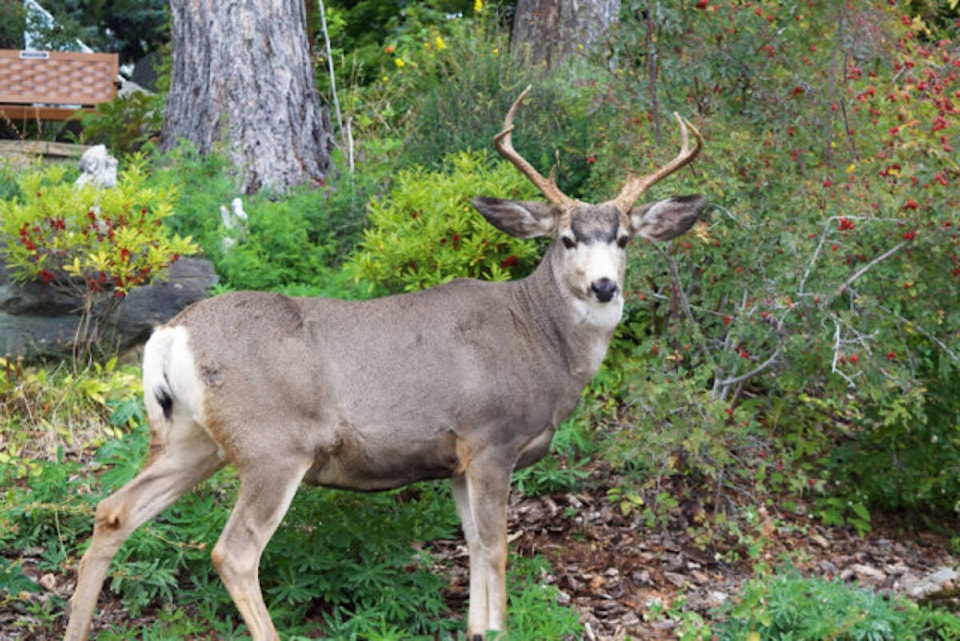Additional testing for a fatal wildlife disease discovered near Cranbrook earlier this year have come back negative, according to an update from the province.
Since two deer in the Cranbrook region tested positive for Chronic Wasting Disease in January, the province has collected additional samples from roadkill, opportunistic sampling and two deer harvested specifically for testing.
The province recently approved a targeted harvest of up to 25 deer — up to 20 mule deer (primarily males) and five white tail deer (only males) — to gather additional samples for testing in areas where the test-positive cases were discovered.
A new wildlife permit has been issued that applies to up to 25 deer in the Englishman Creek area of the South Country, within a 10 kilometre radius of where one deer sample had tested positive for CWD.
Testing is key to determine the potential spread and prevalence of the disease, as the only two test-positive cases in the province were from the two deer near Cranbrook.
Kootenay East MLA Tom Shypitka has been calling on the B.C. government to bring CWD testing to the region.
Nathan Cullen, the Minister of Land, Water, and Resource Stewardship, said the province is currently investigating that feasibility.
“We’ve been scoping the availability of mobile labs, if that would help at all, there has been some interest. We’ve been allowing the harvest of certain animals to be able to get samples in and speeding up dramatically, the turnaround time, because we know that’s an important part,” Cullen said, in an interview with Black Press Media.
“Haven’t made a final determination if we’re going to need to up the lab capacities, because there’s a lot of other pressures on those labs beyond just sampling deer.”
Cullen said that a decision should be made “soon” while acknowledging that the mobile lab or enhancing existing lab capacity is “of real interest to our government and very strongly supported in the First Nations and hunting community.”
CWD affects cervids, such as deer, moose, elk, and caribou, and is a condition of the central nervous system caused by infectious agents called prions, which kill cells in the brain as they accumulate and lead to neurological disease.
Prions, a type of protein, also accumulate in other tissues and may be shed by the infected animal into water or on plants and bedding through saliva, urine and feces.
It is 100 per cent fatal with no known treatment.
However it is not known to affect humans or livestock, although public health guidance recommends that animals with CWD should not be consumed.
Animals that otherwise look completely healthy can be infected with CWD, while more visible symptoms may include weight loss, drooling, poor co-ordination, stumbling, or generally sick with no obvious reason.
Since the disease was confirmed from two deer near Cranbrook, the Province implemented mandatory CWD testing as well as restrictions on the transport and disposal of any road-killed cervids (deer, moose, elk, caribou) in the area where cases of chronic wasting disease were first found.
This is in addition to the regulations in place meant to prevent introduction and spread of the disease. The ministry is working closely with First Nations partners in the area and, following testing, all deer harvested through targeted sampling that test negative for CWD will be given to community members or donated to food banks.
There is no direct evidence the disease can be transmitted to humans and there have been no cases of the disease in humans. However, to prevent any potential risk of transmission or illness, Health Canada and the World Health Organization recommend people not eat meat or other parts of an animal infected with CWD.
In response to the disease detected in neighbouring jurisdictions, the Province established a surveillance and response plan for CWD to be prepared if a case was detected to lessen the risk of the disease spreading.
In accordance with the surveillance and response plan, the provincial wildlife veterinarian is leading with support and input from the CWD advisory committee and regional working groups, which include First Nations, stakeholders, experts on CWD and other partners.
